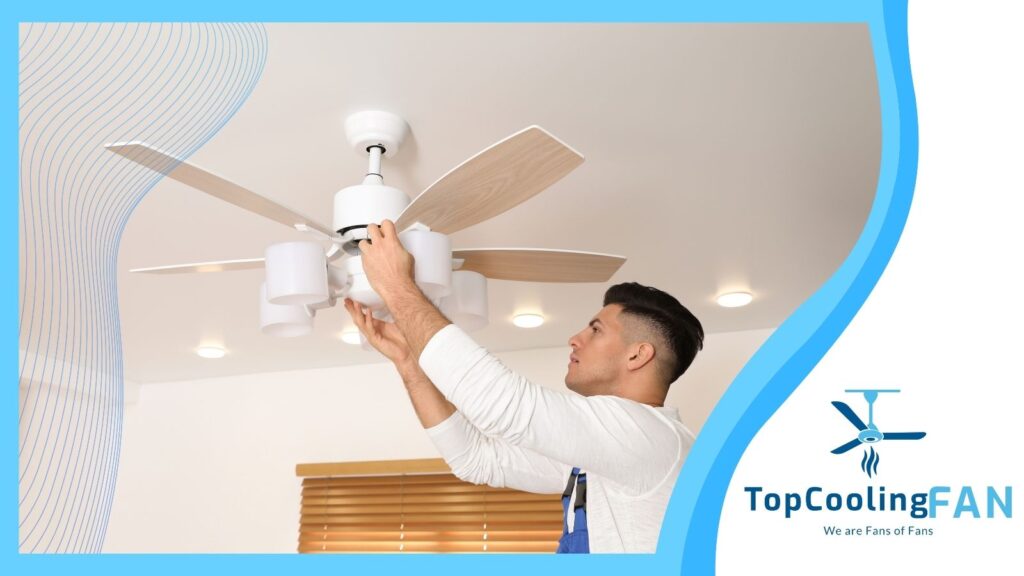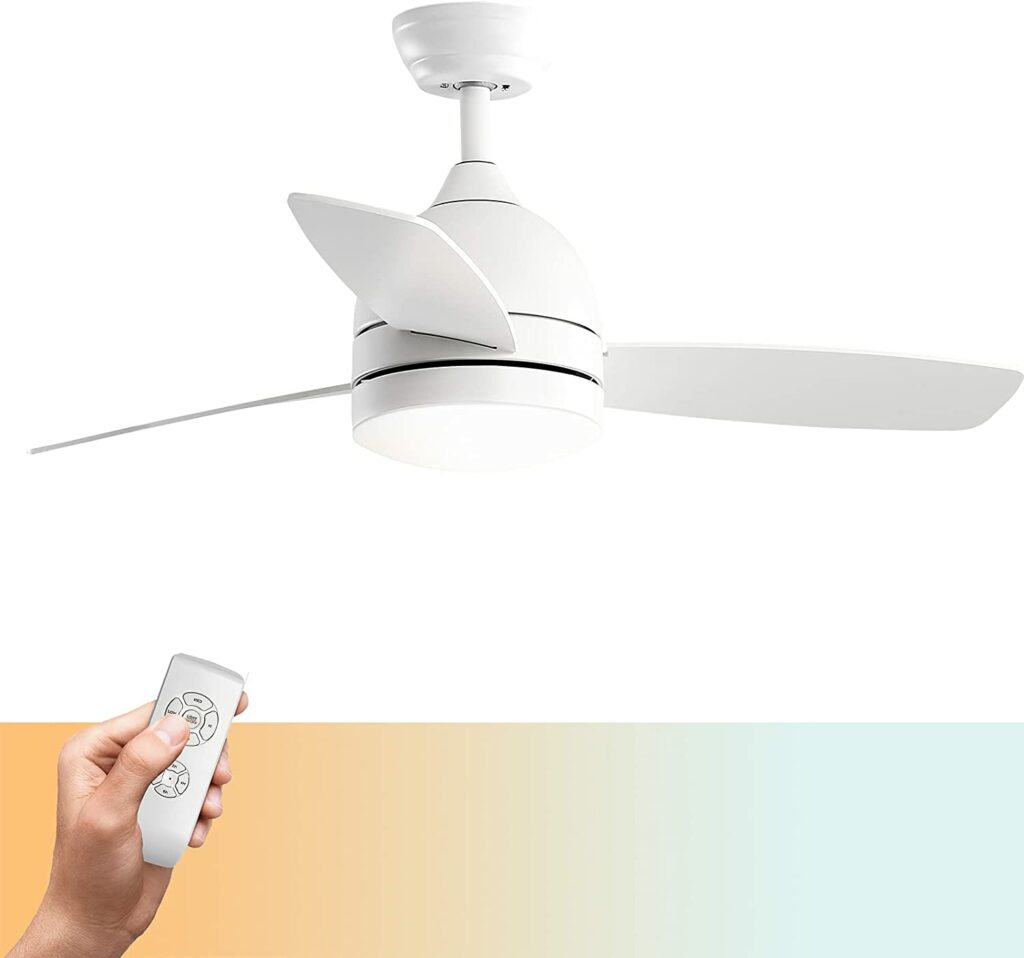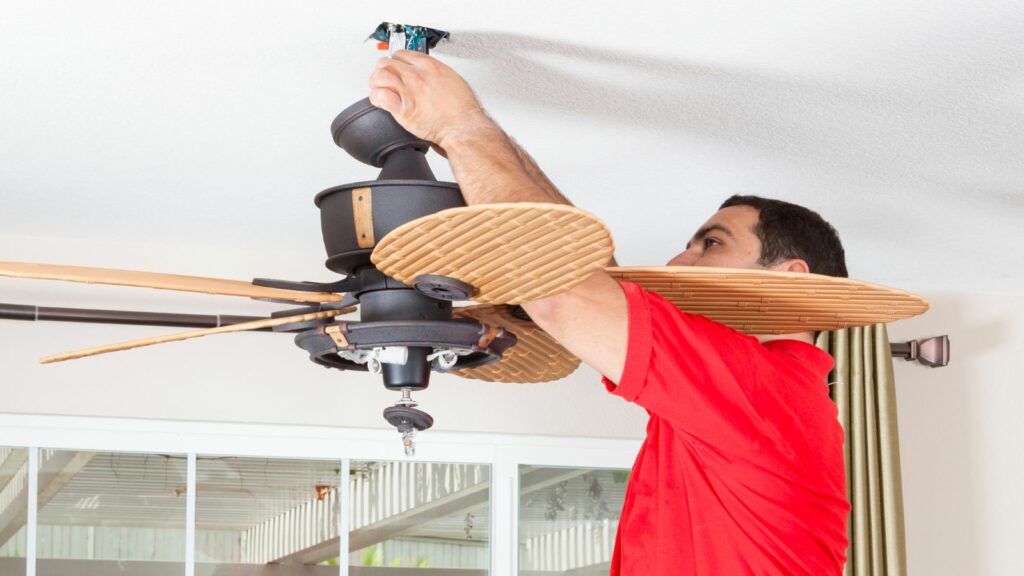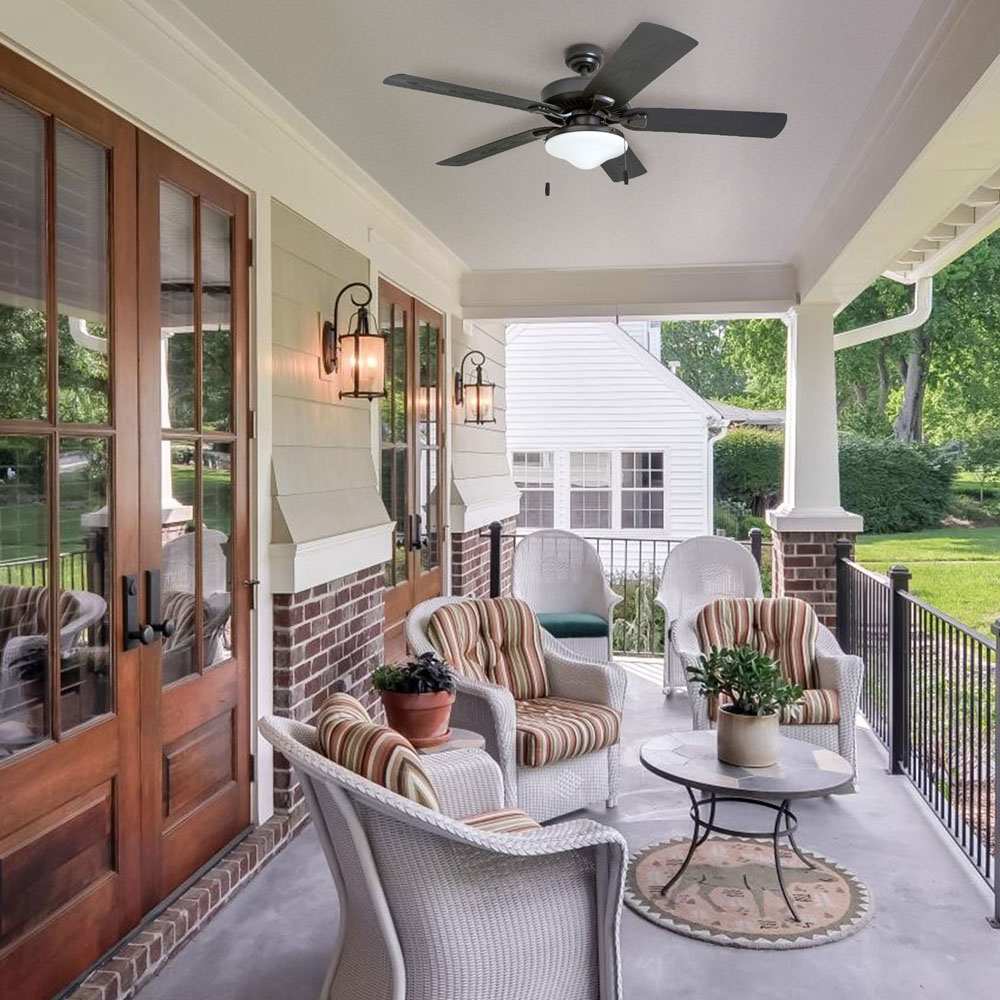Ceiling Fan Direction Guideline: Optimize Comfort & Efficiency
Many people are unaware of the simple yet effective role that a ceiling fan can play in maintaining the comfort and energy efficiency of their home throughout the year. The direction in which a ceiling fan rotates can have a considerable impact on room temperature and overall comfort.
In warmer months, ceiling fans should rotate in a counterclockwise direction to create a cool breeze that helps lower the perceived temperature on the skin, allowing residents to feel cooler without relying heavily on air conditioning.

During cooler months, reversing the ceiling fan to a clockwise direction is key. This adjustment helps in redistributing warm air that has risen to the ceiling, pushing it back down into the living space.
Understanding and utilizing the ceiling fan direction guideline effectively can reduce energy usage and enhance personal comfort in any weather.
Importance of Ceiling Fan Direction
Adjusting the ceiling fan direction is vital for enhancing indoor comfort and improving energy efficiency. The proper setting can influence room temperature and save on heating and cooling costs.
Comfort and Energy Efficiency
In summer, a ceiling fan should rotate counterclockwise to create a cool breeze that allows for higher thermostat settings and reduced reliance on air conditioning.
This counterclockwise motion effectively evaporates moisture from the skin, increasing the body’s natural cooling process and consequently enhancing comfort.
Conversely, during winter months, the fan’s direction should be clockwise. Running the fan on a low setting in this mode pulls cool air up and pushes warmer air, which naturally rises to the ceiling, down the walls and back into the living space. This redistribution of warm air helps maintain a warm, comfortable environment.
Seasonal Settings for Optimal Use
It’s important to adjust ceiling fan settings as seasons change. Here’s a quick reference:
- Summer: Counterclockwise rotation; high speed
- Winter: Clockwise rotation; low speed
Switching the fan direction is usually as simple as flipping a switch on the fan’s motor housing, which realigns the fan blades for the desired circulation.
For modern fans, this setting could also be changed with a remote control. Proper use of the fan direction settings is crucial for achieving the desired temperature control and making the most of the fan’s capabilities for energy savings.
Understanding Ceiling Fan Settings
Adjusting a ceiling fan’s settings is crucial for optimizing airflow and comfort in one’s home. Proper use of the direction switch and understanding fan speed in relation to blade angle are key factors.
The Direction Switch
Most ceiling fans come equipped with a direction switch typically located on the motor housing. This switch allows the fan blades to rotate in either counterclockwise or clockwise direction.
In the summer, setting the fan blades to rotate counterclockwise helps push cool air down, making the room feel cooler. Conversely, during the winter, the fan should rotate clockwise to help pull cool air up and force warm air down, which is helpful for even distribution of heat.
Fan Speed and Blade Angle
The fan speed setting impacts both the effectiveness of airflow and the energy efficiency of the unit. Using a moderate speed setting can strike a balance between achieving a comfortable airflow and conserving energy.
The angle of the fan blades, or the “pitch”, also plays a role in this. The optimal blade angle is typically between 12 to 15 degrees to maximize air movement. When installing a fan, it should be placed at the right height from the floor and away from tall furniture for optimal airflow.
Summer and Winter Modes

The direction your ceiling fan spins can affect both cooling and heating efficiency, depending on the season. A proper understanding of how to manage your ceiling fan’s direction can lead to enhanced comfort and energy savings throughout the year.
Counterclockwise Rotation for Cooling
In summer, setting your ceiling fan to spin counterclockwise ensures that it pushes cool air downward, creating a pleasant breeze that contributes to the cooling effect in a room.
For those sweltering days, it’s best to have the fan operating at a higher speed to maximize the wind-chill effect, making the room feel cooler than it actually is.
Clockwise Rotation for Warming
Conversely, during the winter season, warm air naturally rises to the ceiling. By switching the ceiling fan’s direction to rotate clockwise, you can pull cool air upward and force warm air downward.
This gentle updraft allows for the warm air to circulate more efficiently, maintaining a warm and comfortable environment. It is recommended to set the fan on a low speed to prevent a chilling breeze, as the goal is to redistribute warmth, not generate a draft.
Maximizing Comfort in Living Spaces

Creating a comfortable atmosphere in living areas crucially involves managing temperature and airflow. Strategic use of ceiling fans in conjunction with the thermostat can significantly improve air circulation and contribute to a pleasant home environment.
Ideal Fan Direction for Different Rooms
The direction of a ceiling fan’s rotation is key to achieving optimal comfort. In warmer months, a ceiling fan should rotate counterclockwise to create a cool breeze, helping to lower the perceived temperature.
This setting is particularly beneficial in common areas like the living room or kitchen, where people tend to gather and can quickly feel stuffy. Bedrooms also benefit from this direction, as the gentle downward breeze helps maintain a cool and comfortable sleeping environment.
In contrast, during cooler months, setting the ceiling fan to rotate clockwise at a low speed can make a room feel warmer. This motion facilitates upward airflow, which redistributes warm air accumulated at the ceiling, without generating a windchill effect.
Adjusting the Thermostat Accordingly
When using ceiling fans for improved air circulation, it’s advisable to adjust the thermostat to complement the fans’ effects.
In summer, the thermostat can be set a few degrees higher, as the airflow from a counterclockwise-rotating fan makes the room more comfortable without extra cooling. This adjustment not only promotes comfort but also leads to energy savings.
In the winter months, slightly lowering the thermostat while switching the fan direction clockwise allows the warm air to be redistributed throughout the living space.
Remember, it’s the slow, upwards circulation that gently pushes the warm air along the ceiling and down the walls without creating a draft. This synergy between the ceiling fan direction and the thermostat setting ensures the living areas remain a comfortable sanctuary regardless of the season.
Advanced Ceiling Fan Features

Contemporary ceiling fans integrate technological advancements that enhance user convenience and energy efficiency. These features transform traditional ceiling fans into sophisticated home comfort devices.
Remote and Wall Controls
Ceiling fan operation has been significantly simplified with remote controls and wall-mounted control panels. Users can adjust fan speed, change direction, and toggle the lights without needing to reach for a pull chain or switch on the motor housing.
Some remotes are universal and can be programmed to work with multiple ceiling fans, ensuring effortless control across various rooms.
Smart Fans and Automated Settings
Smart ceiling fans represent a leap forward in home automation. These fans can be paired with a dedicated app, allowing users to control their ceiling fan’s settings from their smartphones or tablets.
Automated settings can be triggered based on ambient temperature, which ensures a room stays comfortable without manual adjustments. Smart fans can often integrate with other smart home devices, such as air conditioning systems, to improve overall energy efficiency and performance.
Supplementary Benefits of Proper Fan Use

In addition to regulating temperature, proper use of ceiling fans offers notable side benefits for air quality and even pest control. Understanding how to leverage these advantages can enhance a room’s comfort significantly.
Air Quality and Circulation
Proper ceiling fan use significantly improves air circulation, which can lead to better air quality in a room. By dispersing the air, it helps in reducing the buildup of dust and allergens.
This is particularly beneficial for individuals with allergies or respiratory issues. Additionally, the wind chill effect generated by a ceiling fan can make the skin feel cooler, allowing for a comfortable environment without excessively lowering the thermostat.
Protection Against Insects and Pests
Ceiling fans can act as an insect deterrent, especially for flying pests. The airflow created by a fan makes it difficult for insects to navigate and settle in a room.
This is why installing an outdoor ceiling fan on a porch or patio can be an effective way to enhance comfort during outdoor activities without relying solely on chemical repellents.
Practical Tips for Ceiling Fan Maintenance

Proper maintenance of ceiling fans increases their efficiency and longevity. A well-maintained fan ensures optimal performance throughout the different seasons, providing both cool air in the summer and warm air distribution during winter.
Cleaning and Dusting
Regular cleaning is crucial to keeping a ceiling fan in good working order. They should turn off the fan and wipe down the blades with a soft, damp cloth to minimize dust build-up.
For hard-to-reach areas, they may use a step ladder. Make sure that the ladder is steady to prevent falls. To prevent dust from spreading into the room, they can place a sheet or newspaper under the fan during cleaning.
Seasonal Maintenance Checklist
Spring:
- Verify that the fan is set to rotate counter-clockwise to create a cool downward airflow.
- Check and tighten any loose screws on the blades and mounting brackets to ensure stability.
Fall:
- Adjust the fan to rotate clockwise on a low setting, which helps to pull up cold air and push down the warm air accumulated at the ceiling.
- Inspect the fan for any unusual sounds or wobbling, which may indicate it needs maintenance.
In all seasons, they should ensure the fan is switched off and completely still before performing any cleaning or maintenance tasks. Regularly checking that the fan blades are dust-free and that the fan is set to the correct rotation, can contribute significantly to a fan’s maintenance and operation efficiency.
Economic Impact of Ceiling Fans

Ceiling fans can significantly influence a household’s finances by affecting heating and cooling costs. Proper use of ceiling fans has the potential to reduce energy bills and optimize electricity costs.
Reducing Heating and Cooling Costs
Using ceiling fans effectively can lead to noticeable savings on heating and cooling costs. During warmer months, ceiling fans should rotate counterclockwise, creating a cool breeze that makes a room feel cooler.
This allows homeowners to set their thermostats higher without sacrificing comfort, saving on air conditioning expenses. Conversely, in cooler months, setting the fan to rotate clockwise at a low speed can push the warm air that naturally rises back down into the living space, possibly lowering heating costs.
Impact on Energy Bills
Ceiling fans consume energy but can still be a cost-effective way to regulate a home’s temperature. Optimizing ceiling fans’ use can lead to a decrease in energy bills.
While ceiling fans themselves use electricity and contribute to electricity costs, their energy-efficient circulation of air can help reduce the reliance on heating and cooling systems, which typically consume more energy. Proper maintenance and awareness of ceiling fan direction can play a key role in maximizing these savings.
Ceiling Fan Use in Special Conditions

When installing ceiling fans in unique home environments, understanding the role of fan size, direction, and air flow, measured in cubic feet per minute (CFM), becomes essential.
The proper use of a ceiling fan can enhance comfort and efficiency, whether the setting is indoors with high, vaulted ceilings, or in an outdoor space where environmental factors come into play.
Vaulted Ceilings and Large Spaces
Vaulted ceilings offer a dramatic architectural feature to a room, but they also create a challenge when it comes to air circulation. For these spaces, one must select a ceiling fan with a higher CFM rating to ensure adequate air movement throughout the room.
The fan’s blades should be long enough to move air efficiently through the large space. A downrod extension may be necessary to position the fan at an optimal height, generally 8 to 9 feet above the floor, ensuring that the fan enhances the space heater’s efficiency by evenly distributing warm air during cooler months.
Outdoor Fans and Environment
For outdoor spaces and patios, it’s critical to choose a ceiling fan that’s designed to withstand the environment.
Opting for an outdoor-rated fan can combat humidity and resist weather-related wear and tear.
These fans should operate with a counterclockwise blade rotation to create a cool breeze during warmer months.
In addition to providing comfort, the right fan can save energy by reducing the need for air conditioning and other cooling devices outdoors.
When measuring for an outdoor fan, take into account the size of the space to ensure a model that can deliver an effective CFM for the open-air setting.
